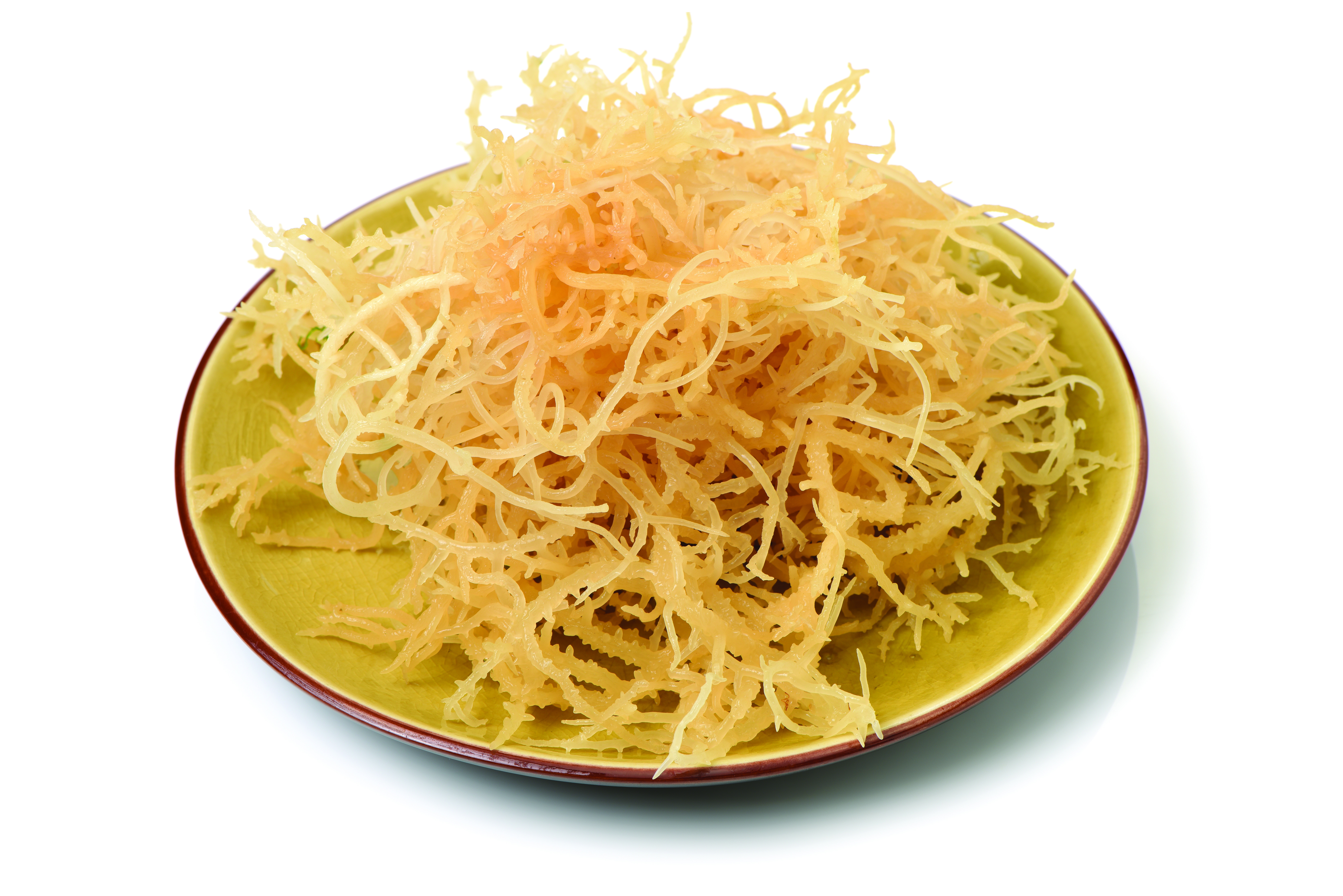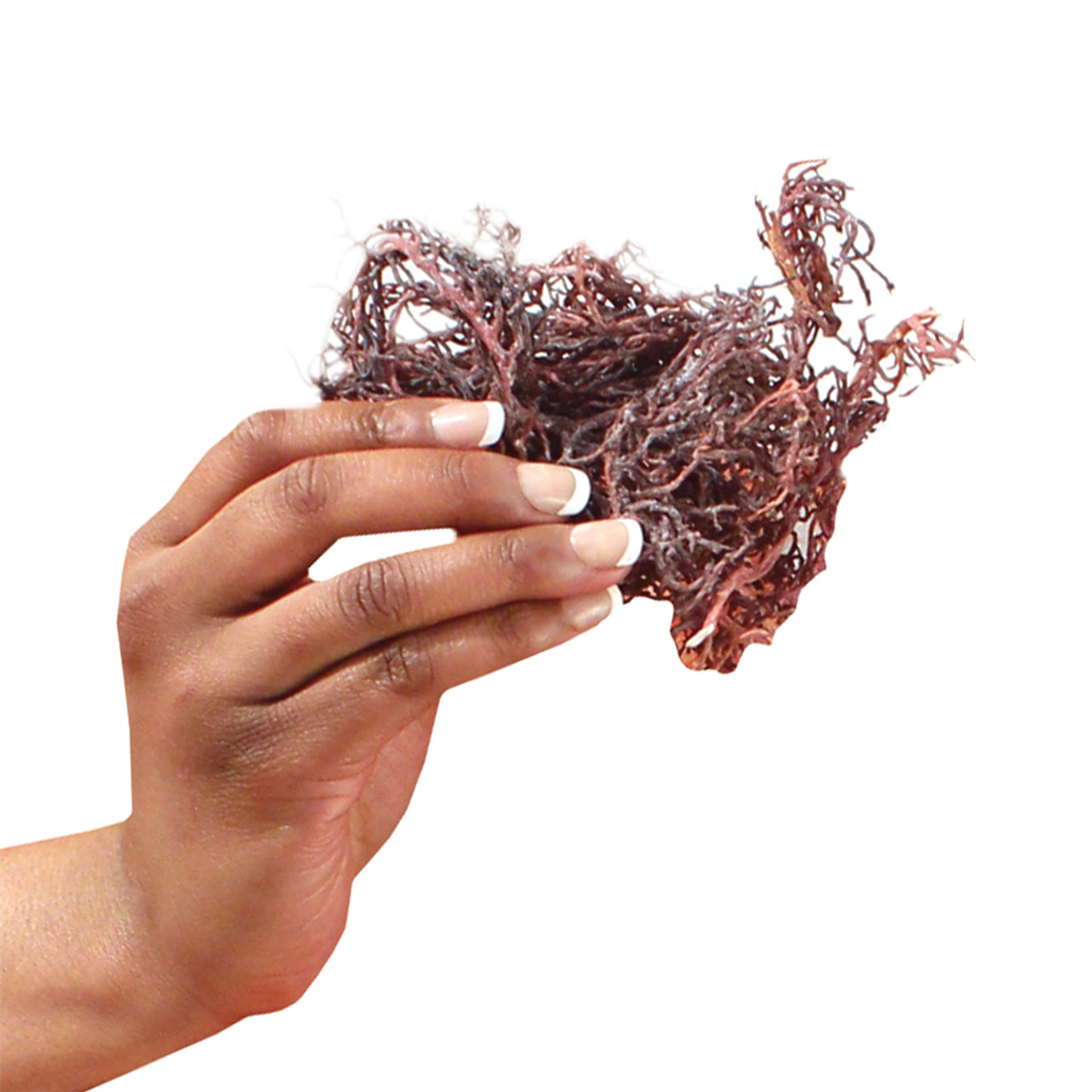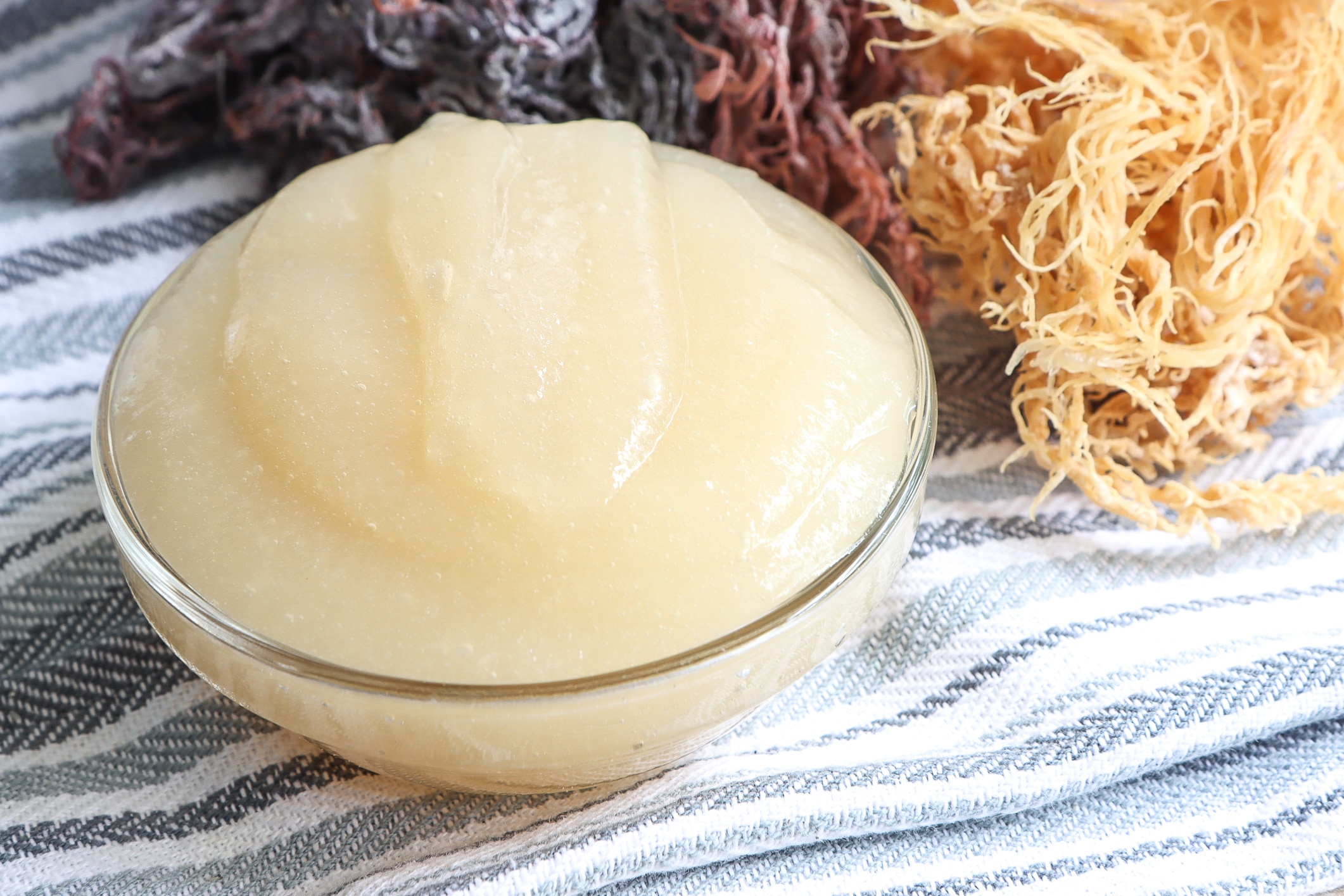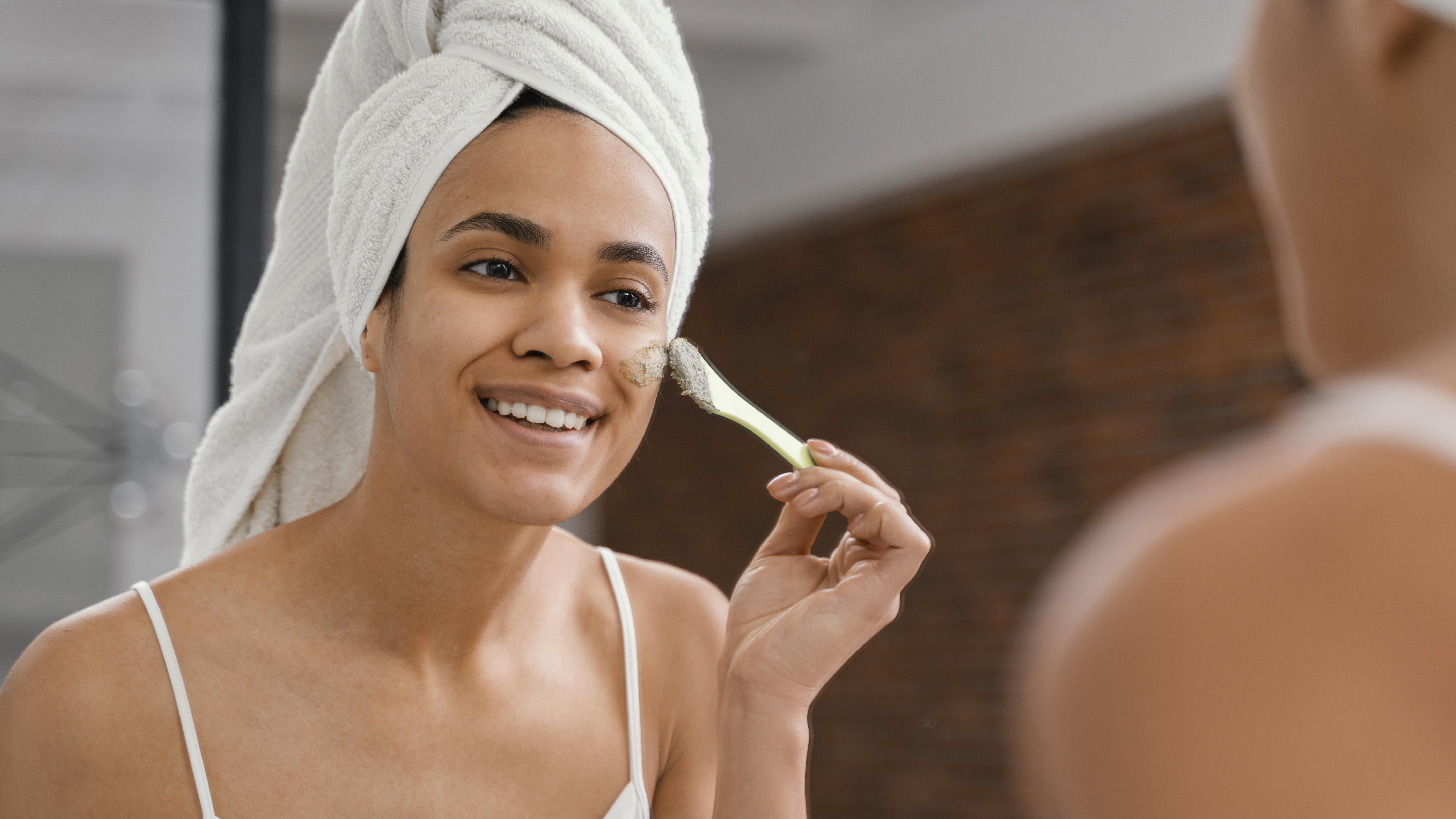
Is constant fatigue making it harder for you to succeed in life? Do you keep trying –and failing—to lose weight? Could your bedroom life benefit from a little oomph? A small ocean plant called sea moss can help you with these problems –and more.
What is Sea Moss?
Sea moss is a kind of sea vegetable that grows along rocky coasts in the North Atlantic. This nutritional powerhouse is high in protein, vitamins, and minerals –all in a form that is easy for the body to use. It is used to treat heart trouble, digestive problems, and thyroid disease. Sea moss can help reduce inflammation and increase sex drive and can be used on your skin and hair as a beauty treatment.
Sea moss is not the same as seaweed, but both are members of the algae family. Algae are rootless plants that grow in the water and grow by turning energy from the sun into food.

Sea Moss Benefits
Nutritionists consider sea moss to be a true superfood. Every spoonful of sea moss gel is packed with minerals, vitamins, and fiber.
Weight loss and digestive problems
This amazing plant is high in fiber, so it helps improve digestion. Getting enough fiber helps good bacteria grow in your gut. These good bacteria ease or prevent chronic diseases such as Crohn’s disease, IBD, IBS, and chronic constipation.
Adding a small amount of sea moss gel to soup or smoothie can also help you lose weight. The fiber in sea moss absorbs water and forms a gel which helps fill you up and makes it easier to eat less.
Heart health & diabetes
According to Beth Czerwony of the famous Cleveland Clinic, studies show that sea moss can help reduce bad cholesterol and lower your blood pressure. Other studies indicate that sea moss helps control blood sugar, so you’ll be less likely to develop diabetes.
Exercise and concentration
Another nutrient in sea moss is taurine, an amino acid that may help you exercise better. Taurine is antioxidant and anti-inflammatory, and helps your muscles repair themselves from stress. While most Americans get enough taurine in their daily diets, several studies have shown that taking additional taurine lets you run faster and exercise longer.
Iodine pros and cons
Sea moss and seaweed are both excellent sources of iodine, which your body needs to produce thyroid hormones. These hormones control your heart and digestive system. Babies and children need iodine for their brains and bodies to develop properly. Some pre-natal vitamins include extra iodine. Iodine may also be beneficial for women with fibrocystic breast disease. If you are lactose-intolerant, vegan, or don’t eat fish, you may not be getting enough iodine.
What Vitamins and Minerals are in Sea Moss?
Amazingly, sea moss contains nearly all the vitamins and minerals needed by the human body. Of course, some are only present in small quantities. Sea moss is a wonderful supplement, but you still need to eat a balanced diet.
Let’s take a closer look:
Vitamins
Sea moss contains every member of the vitamin B family. The B vitamins work together to change food into energy that our bodies can use. They also prevent migraines, keep our memories sharp, and help skin and hair stay healthy.
Sea moss contains all the B vitamins. It is especially rich in folate (vitamin B9), which helps produce red and white blood cells. Black females are more likely than others to suffer from folate deficiency. Signs of low folate levels can include fatigue, muscle weakness, memory and comprehension problems, vision problems and depression. If your tongue is sore or you have ulcers in your mouth, you may need more folate in your diet.
It also has lots of vitamin B2 (riboflavin) and B3 (niacin). B2 helps produce red blood cells and prevent heart disease, while B3 increases good cholesterol.
Sea moss is also a good source of :
-
Vitamin A which supports immune function and helps body cells grow. It is critical for eye health and can also help reduce acne.
-
Vitamin C Everyone knows that Vitamin C is good for colds, but it has many other functions as well. It helps protect against heart disease, eye disease, and cancer. According to Mark Moyad, M.D., M.P.H. at the University of Michigan, “Higher blood levels of vitamin C may be the ideal nutrition marker for overall health.”
-
Vitamin E Vitamin E is important for overall good health and has antioxidant properties to protect against cancer and heart disease. According to the Mayo Clinic, some studies show that Vitamin E can slow down the progress of Alzheimer’s disease.
-
Vitamin K sounds like one vitamin, but it’s actually a whole group of them. The Vitamin K group helps bone function and blood clotting.
Minerals
Did you know that your body needs 102 different minerals to stay healthy and strong? Sea moss has 92 of them in a form that’s easy for your body to absorb. Here are the most important ones:
-
Iodine Your thyroid needs iodine to produce hormones that control your metabolism and energy level. Without enough of these hormones, you will feel tired, and your mind may seem a bit foggy. A urine test will tell you if your iodine level is low.
-
Caution – Too much iodine can be as bad for you as too little. If you have any thyroid problem –hyperthyroidism, hypothyroidism, Hashimoto’s disease, or Grave’s disease—it is very important to consult a doctor before you take any iodine supplement, including sea moss.
-
Iron Your bloodstream carries oxygen to all the parts of your body, and it can’t do that without enough iron. A single serving of sea moss gel contains 10% of the iron you need. Girls and women who are menstruating often have problems with low iron and anemia.
-
Magnesium Magnesium helps the body carry out hundreds of important functions. Among other things, magnesium helps your muscles --including your heart --work harder, helps you sleep well, reduces depression and PMS, prevents migraines, strengthens your bones, and reduces inflammation.
-
Potassium Potassium helps regulate blood pressure and keeps your heart healthy. The nervous system uses it to send signals to other parts of the body.

Types of Sea Moss
The two most important kinds of sea moss are Jamaican and Irish.
The two types look different but have many of the same benefits. Jamaican (also called Caribbean) sea moss can be grown in farms, so it is less expensive and more widely available.
The scientific name for Jamaican sea moss is Genus Graciliara. It grows in warm water, especially around Jamaica and St. Lucia. When it is dried, it looks like a bunch of tangled strings. Jamaican sea moss is usually gold in color, but there are also red, blue, and purple varieties. The darker varieties have higher mineral content.
Jamaican sea moss can be wildcrafted, ocean-farmed or pool-farmed. Wildcrafted sea moss is gathered where it grows naturally and has the highest mineral content. However, if too much sea moss is taken from the ocean, it will cause serious environmental problems.
Fortunately, this kind of sea moss can be farmed. Ocean-farmed sea moss is better for you because it absorbs minerals from the ocean. Pool-farmed sea moss is grown in ordinary water. It has the same vitamin contents as ocean-farmed, but fewer minerals.
Irish sea moss became famous in the 19th century when it kept many people alive during the Irish Potato Famine. It grows around Ireland, and in the cool waters off the coast of Maine and the Baltic countries. Its scientific name is Chondrus Crispus. Irish sea moss grows on long stems with lots of little plant spikes. It looks a little bit like young, thin broccoli, but is red or purple. Irish sea moss is always gathered wild from the sea.
Sometimes, seaweed from the Pacific is marketed as Pacific sea moss. It has some health benefits, but it isn’t true sea moss. Unlike Atlantic sea moss, both Irish and Jamaican, Pacific sea moss is sometimes grown in dirty water. It’s safer to use real Atlantic sea moss.
Caution: Because Irish sea moss is so popular right now, some companies market purple Jamaican sea moss as Chrondrus Crispus and charge a lot for it. This is false advertising—true Irish sea moss grows only in cold waters.

How to Prepare Sea Moss
The most convenient way to take sea moss is to buy sea moss bitters or sea moss pills. You’ll get more health benefits if you make your own sea moss gel –and it’s easy to do. Sea moss gel has a short shelf life, so you won’t want to make too much at once.
Use 1 ounce of Caribbean sea moss to get 1 pint (16 ounces) of sea moss gel.
-
Put the sea moss in a strainer and rinse it thoroughly under cold running water. Make sure you rinse out all the sand and dirt. You can finish by putting it in a bowl of clean water and picking out anything unpleasant that survived the rinsing.
-
Soak the clean sea moss in a large bowl for 6 to 36 hours. You can add lemon or lime to the water. Soaking lets the sea moss expand. It should be soft and slippery when it’s done.
-
After soaking, put one cup of sea moss in the blender with 1 ½ -2 cups of water. Start the blender on low and gradually go up to the highest setting. You should blend it for 1-3 minutes.
-
Put it in a container with a tight lid and keep it refrigerated or frozen.
How much sea moss? You should only have one or two tablespoons of sea moss gel each day. If you take more, you’ll be consuming too much iodine and may develop thyroid problems.
How Long does Sea Moss last?
Expect dried sea moss to last about 6 to 12 months when stored in a cool, dry place. Even though it’s dried, sea moss will begin to lose flavor and nutritional qualities over time.
Dried sea moss will get moldy if it’s exposed to moisture. The mold will appear as black or green spots. Don’t use moldy sea moss—throw it out and start with a fresh package. If the sea moss wasn’t completely dry when it was packaged, mold may develop early.
Sea moss gel contains a lot of water and has a shorter shelf life. It should stay fresh for about one month if you keep it in the refrigerator. When sea moss gel spoils, the color becomes darker. It may also smell bad or taste bitter. Mold or slime are also signs that the gel has gone bad.
It's a good idea to take a photo of your gel when you make it. Use the photo to check the color of your refrigerated gel and make sure it’s still fresh.
How You Can Use Sea Moss Gel
Sea moss gel is good for you inside and out. Here are a few ways to add it to your diet, plus some face mask and scalp treatment recipes.
One way to take sea moss gel is to add some fresh fruit or dates to the gel when you make it. Enjoy a spoonful or two as an easy sweet treat every day.
Many people add sea moss gel to their smoothies. You can freeze cubes of sea moss and use them to replace some of the ice cubes.
There’s a traditional Jamaican sea moss drink that is used as a love potion –it’s supposed to enhance the libido. The original recipe calls for isinglass, which is made from the bladders of sturgeon. Isinglass is expensive and hard to find, but a Jamaican blogger has come up with an easier version of sea moss drink.
If you feel more ambitious, you might want to try this
traditional Irish pudding from the Ballymaloe House Hotel in Ireland, Carrageen Moss is another name for Irish sea moss, but you can use Jamaican sea moss instead.

Look more beautiful by trying one of these sea moss face mask recipes:
Combine one tablespoon of sea moss gel with one teaspoon of bentonite clay powder, and one teaspoon of raw apple cider vinegar. Massage into your skin and leave on for twenty minutes. This mask will shrink blemishes and tighten pores.
Another purifying sea moss gel mask uses 2 tablespoons of sea moss gel mixed with one teaspoon of turmeric powder.
Sea moss is also good for your hair: Combine a teaspoon of sea moss gel with a teaspoon of castor oil and five drops of rosemary oil. Rub it into your scalp and leave it there for a few minutes before you shampoo.
 USD
USD  GBP
GBP  CAD
CAD  AUD
AUD  JPY
JPY  EUR
EUR  NZD
NZD 